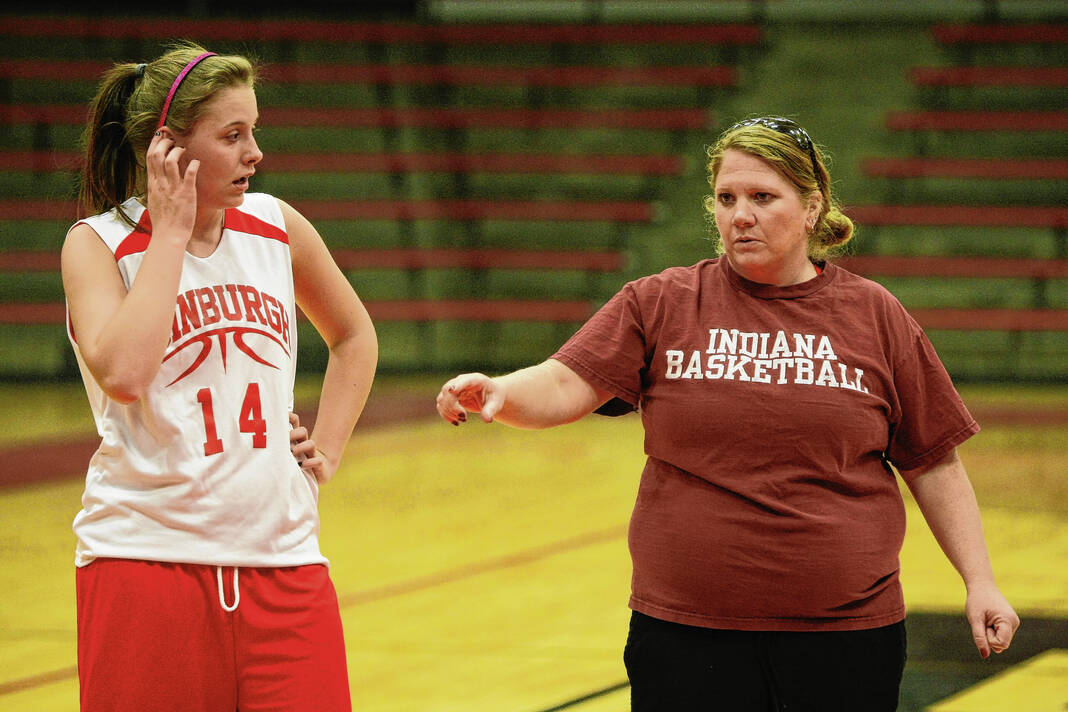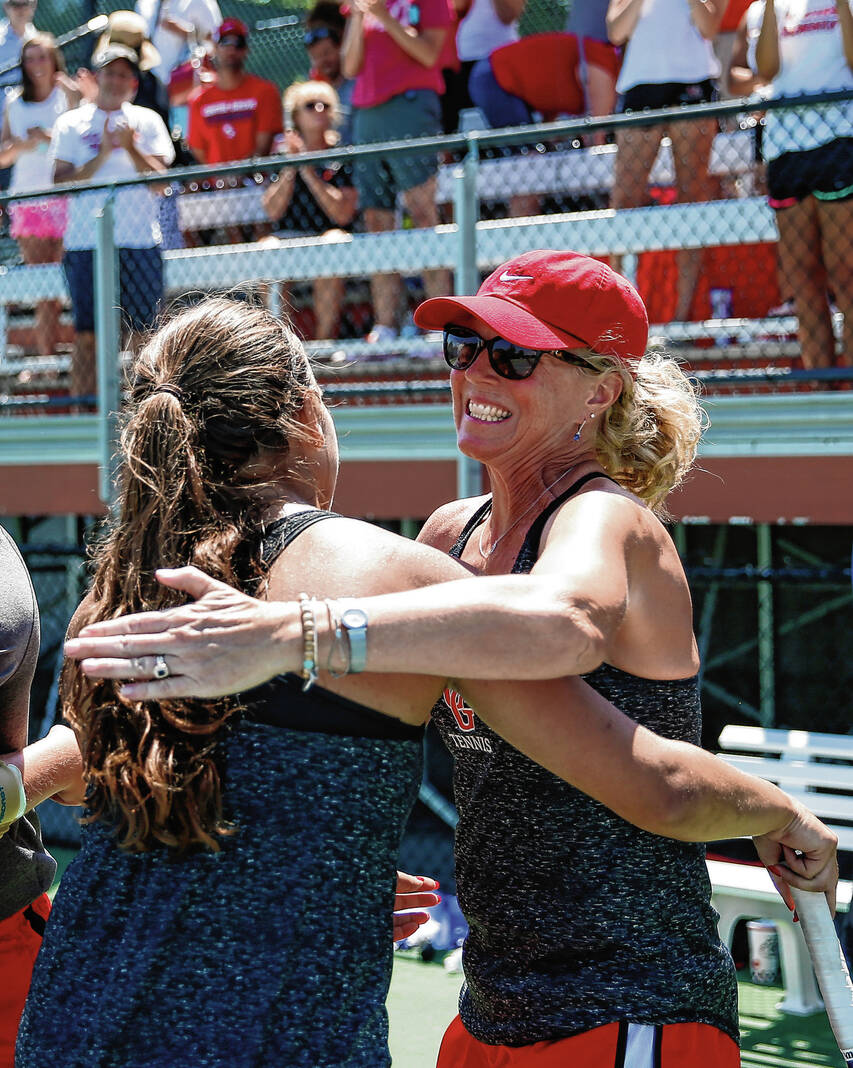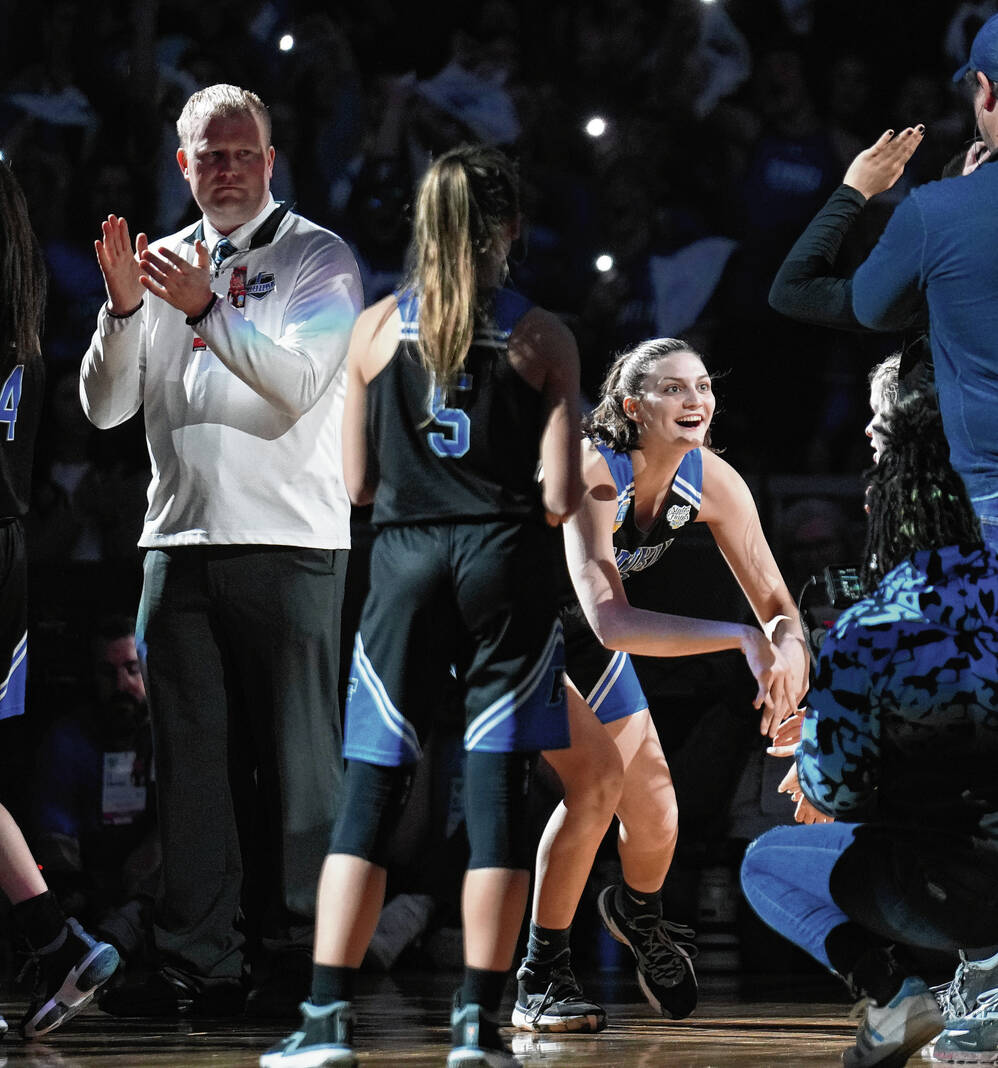Debby Burton remembers sitting courtside as a young girl, watching icons such as Billie Jean King, Chris Evert and Martina Navratilova play while her father umpired matches for the Virginia Slims women’s tennis tour.
She knew she was watching the best players the sport had to offer. What Burton didn’t realize until she was a little older was that she was also witnessing the early stages of the battle for gender equity in athletics.
A half century ago, women’s sports were virtually nonexistent — at least by today’s standards. High schools weren’t fielding many teams for girls, and those that did weren’t providing nearly the same resources that the boys teams received. But on June 23, 1972, Title IX of the Education Amendments was passed, prohibiting federally funded educational institutions from discriminating against students or employees based on sex.
Much was made this year of the 50th anniversary of its passage, which certainly helped pave the way for the massive growth we’ve geen in women’s sports over the past two generations. But even with Title IX in place, progress wasn’t exactly immediate here or anywhere else.
(Heck, the IHSAA didn’t have a state tournament for girls basketball until 1976. And that’s basketball! In Indiana! Softball wasn’t added until 1985, and girls soccer not until 1994.)
Part of that had to do with society’s definitions of gender roles and what were considered acceptably feminine athletic activities. Outside of such Olympic staples as gymnastics and figure skating, where the likes of Nadia Comaneci and Dorothy Hamill became household names in the mid-1970s, tennis was about the only women’s sport that received much mainstream attention.
That was largely due to the efforts of King, who was the most outspoken proponent for athletic gender equity in the 1970s. She was leading the push for more equal pay in tennis, and drew millions of eyeballs to the cause when she defeated Bobby Riggs in the “Battle of the Sexes” in 1973.
Burton was watching, but she wasn’t fully aware of the scope of King’s accomplishments until years later.
“Billie Jean King led that way,” said Burton, who started the middle school tennis program at Center Grove in 1992 and doubles as the Trojans’ high school girls coach. “She was so pivotal in demanding equal pay; (she) played Bobby Riggs and created all of this spotlight of, ‘We deserve to be paid, too.’
“When I was young, I wasn’t aware that all that was going on, but it was going on.”
In the years since, the biggest stars of women’s tennis — from Evert and Navratilova to Steffi Graf to Venus and Serena Williams — have been at least as famous as their male peers, and often as well paid. Evert’s career earnings were actually slightly higher than leading male contemporary Jimmy Connors, and only three men’s players in history have made more money on the court than Serena Williams.
Ambry Bishop Santillo has seen similar strides being made toward equality in women’s golf. Introduced to the sport by her father Ted Bishop, who owns The Legends, Santillo played golf at Franklin and then Indiana University; she’s been the women’s coach at St. John’s University since 2005.
Women’s golf has become far more popular and competitive at all levels in recent years, but Santillo notes that it wasn’t always that way — and that her athletic upbringing, like Burton’s, might have been more the exception than the rule in the past.
“I was fortunate in the sense that I grew up in an environment that was very welcoming to women playing,” Santillo said. “My dad was always very supportive of that, and very big on giving not only my sister and I opportunities, but a lot of the junior girl golfers in the state of Indiana, trying to come up with better opportunities for them.
“When I talk to other people, their upbringing and how they grew up, they maybe didn’t have as many opportunities as I had within the sport, or just within athletics in general.”
‘I’m still a girl’
By the 1980s, more girls were playing sports across the country; youth leagues for such sports as soccer, basketball and softball became far more commonplace. But opportunities didn’t always come with full acceptance.
Andi Ferris, now the head volleyball coach and a girls assistant at her alma mater, Indian Creek, grew up on a farm and was expected to do all of the same work as a boy would do. She also loved playing basketball, and she recalls having to earn the grudging respect of the boys on the blacktop.
“I remember those early days on the playground where the boys were like, ‘You can’t play,’ and of course my attitude’s like, ‘I’m going to show you,’” Ferris said. “So at first, no, they didn’t (accept me), but then when I came in and beat them, and stole the ball from them or blocked their shot … then they didn’t really give me a hard time.”
Amy Schilling used to run into the same issues growing up in Columbus.
“Unless I knew some of the guys and they knew I could play, it was hard to get into a game,” said Schilling, now the girls basketball coach at Edinburgh.
Attitudes among kids were different at that time; girls who took sports seriously were often labeled as tomboys, among other things. Schilling noted that it could be “hard to find a boyfriend” if you were an athlete.
Despite that, many girls ignored their classmates’ taunts or whispers and continued doing what they loved.
“I felt like I could play basketball one day and put on a dress the next day and be a girl too,” Ferris said. “I just liked to do things that the boys liked to do — but I’m still a girl.”
Pulling even
All of the above women say that the teams they coach now get the same treatment from their schools as their male counterparts. Ferris and Schilling point to their respective athletic directors, Indian Creek’s Derek Perry and Edinburgh’s Dave Walden, as strong advocates for equality. Burton says the same about her colleague, longtime Center Grove boys tennis coach Ivan Smith.
“Right now, I’ve got an awesome AD that, if the boys have something, they’re going to work for us to have the same thing,” Schilling said of Walden. “Title IX or not Title IX, that’s just the way he is.”
Santillo says that St. John’s provides equal resources for its men’s and women’s teams, but she did add that outside booster money is still greater on the men’s side, largely because those programs have been around longer and have more established donor bases.
In generations past, the playing field wasn’t always so level. While Ferris says she doesn’t recall much unequal treatment during her high school playing days, outside of boys teams getting preferential practice times, Schilling remembers her years at Columbus East a bit differently.
“When I started playing, I was wearing uniforms from the 1980s, because we didn’t get — Maria Stack, I had her hand-me-downs as a freshman,” Schilling said. “We had to put it over a chair, get it wet and stretch it in order to wear it. And we had to do a lot of fundraising for our own uniforms. The athletic department bought the football jerseys and the helmets and all that, but if we wanted anything new, we bought everything. We did the fundraising, we ran concessions at our games. That’s the other thing — my parents ran our concessions, because they didn’t really open the concessions for our games.
“Sometimes I think the kids throw out Title IX, but they don’t really know how much they have gotten compared to what it was.”
High visibility
As a young tennis fan, Burton was often able to see her heroes play on television, but it took quite some time for other women’s sports to get on the air regularly.
“No female soccer was televised; none of that stuff was happening,” Burton said of her childhood. “It was gymnastics and tennis — and ice skating. Figure skating was big, so big, when I was young.”
Gradually, that changed — and it’s snowballed in recent years. Soccer had its breakthrough moment in 1999, when Brandi Chastain’s famed penalty kick finished off a United States victory in the Women’s World Cup; professional and international matches are on TV regularly now. Women’s college basketball and the WNBA are broadcast far and wide, as is the LPGA Tour.
As a result, female athletes have earned greater notoriety and respect. So when Santillo teaches male golfers and uses professional women as a measuring stick for them, it’s not meant (or taken) as an insult.
“The female professional is way more relatable,” Santillo said. “When I teach a lot of people, when they’re males, we talk about all the time — ‘I’m not even going to give you the PGA Tour stats. I’m going to give you the LPGA Tour stats, because that’s more realistic to your game.’ I see that as a positive … because the game’s getting more respect.”
The biggest benefit of the increase in air time for women’s sports is that it provides better role models for the next generation of athletes.
Ferris says she remembers learning the game of basketball from Indiana University and Purdue men’s games, because that’s what was available to watch. She and her teammates even used to set screens with their hands placed in a way that would protect male genitalia.
Fortunately, she notes, her daughter has a chance to learn from such WNBA stars as Breanna Stewart and Skylar Diggins-Smith instead, and she doesn’t have to pattern her game after men.
“My daughter gets to watch other female athletes, and she gets to aspire to be like them,” Ferris said. “I didn’t have that opportunity to watch those girls on TV.”
Not perfect, but better
Title IX hasn’t been a panacea by any means; the widely circulated video highlighting the differences between men’s and women’s facilities at the 2021 NCAA basketball tournaments was just one of the latest reminders that the battle for equality — in sports and in everyday life — is far from over.
Remarkable progress has been made, especially over the past 50 years, in eating away at the gender gap in this country.
Burton once spent a month in Africa and got a chance to see firsthand how fortunate American female athletes are compared to some of their peers overseas. She shares that experience with her players to this day.
“It’s something that I always point out to girls,” she said. “Whether you win or lose, you need to realize — it’s such a blessing to live here and to have this opportunity, because it is not this way all over the world.”
Perhaps one day, it can be.







